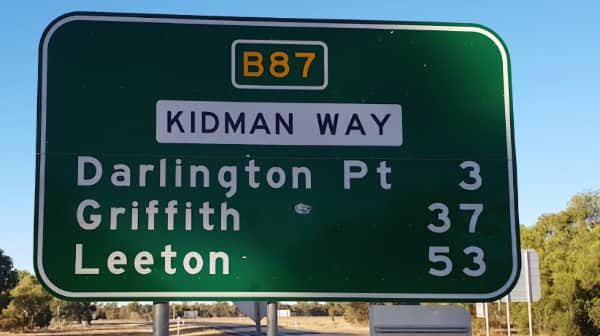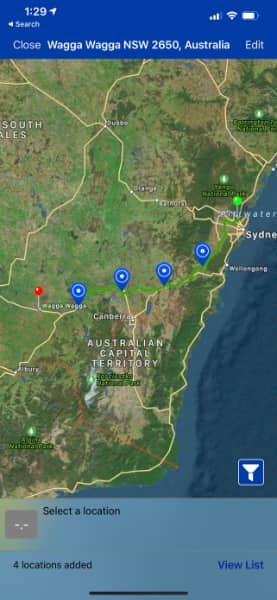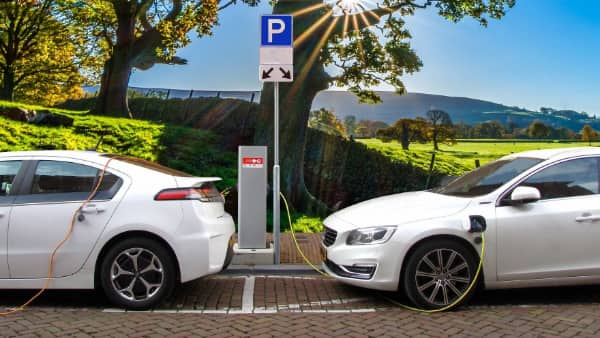My EV ownership is fast moving towards becoming a reality, and with that I have to face the classic EV question: What do I do about range anxiety?
If you’ve not read part one, it’d be a good idea to start there:
My Australian EV journey: Why is it so hard to own an EV down under?
Before you ask, why, yes, I did pick that headline deliberately to stick a certain song in your head. And if you’re thinking “which song”? then you’re probably way younger than I am, but it’s this one:
Wouldn’t even take that much reworking to get it to work in an EV context, really.
Just like Salt ‘N Pepa’s classic hit wants to encourage discussion about a deeply important issue, the whole subject of range and recharging invariably comes to the fore when you start talking about electric vehicles.
It’s arguably even more pronounced for the route I’m taking via a second-hand vehicle, because the very nature of EV batteries, like any other lithium-ion battery is that they degrade over time.
Degradation in this sense equates to less range, and a LOT of the feedback I’ve had from last week’s article has related to this exact point. People genuinely feel as though EVs are going to leave them high and dry and unable to function as they normally would. I should be racked with worry around how I’m possibly going to survive driving an EV in Australia.
Except I’m not, and for some reasons that are both personal and general. Basically, I’ve done my sums.
How much range do you need, really?
Here’s the key thing for considering EVs: You need to know how much you actually drive. Not how much you might want to on a whim, specifically speaking, but your real world needs. I’m not going to pretend that my needs are your needs, but in this case, and in the case of the 2nd-hand Nissan Leaf that’s heading my way, I need a city driving car to do trips that will be less than 50km each way.
You don’t need much in the way of maths skills to work out that means a 100km range, although that 50km figure is actually longer than most of the drives done in the car that the Leaf will be replacing.
EV range can vary by weather, driving conditions and driving style in the exact same way that it can in an ICE vehicle, but given the estimated 150km range of the Leaf, I’m pretty happy with where I stand right now. Honestly, most of its trips are 5-10km round trips, total, and that’d be doable even if most of the battery capacity fell off a cliff.
OK, I hear you think, well done for working out your needs, but my needs are much larger than that. 150km is not going to get the job done.

Well… maybe, although the raw numbers don’t entirely suggest that this is true for everyone. Indeed, from a logical perspective there should be a huge market of people whose vehicles rarely need much in the way of long range anyway.
How can I be confident of that?
Statistics, good reader.
I’ve done my research, you see, and according to the Australian Bureau of Statistics, there were some 19,768,518 vehicles in Australia as of 30 June 2020.
Blimey, that’s quite a lot. That’s a car for (roughly) every 1.28 people in Australia. I get the feeling that we like cars a lot, although as I’ve previously noted, I’m not a “car person”. My interest is in the technology and ultimately getting from A to B… but I’m digressing.
The key ABS stat is the average km driven per car, which it states as 12,100km per car per year. Crunch that down by 365 days, and those cars are doing about 33km per day on average.
Yes, again, some folks are doing more, but then it’s the nature of averages that plenty of folks would be doing less. There’s a lot of commuters who drive to the shops and stations in our metropolitan areas, and even within the larger regional ones that would fall into those categories.
Again, yes, you personally might say to me that you don’t drive every day, but when you do it’s to go down the road 500km for a bottle of milk or something every Friday.
That wouldn’t skew those figures out all that much, but the point I’m trying to get across here is that the average Australian car journey genuinely isn’t that far. My own choices and needs fit pretty neatly within that space, and well within the range of the car I’ve chosen.
So… you’re never going on holidays outside of Sydney again?
No, I do plan to leave Sydney and travel further than that, and this is where the second part of range anxiety comes into play. To be 100% upfront and transparent, alongside the Leaf as a family we’re keeping a 2018 Mazda 3 running, largely because it’s the only car we’ve ever purchased from new, and it doesn’t make a lot of economic sense to get rid of it right now.
The genuine hope here, however, is that it will be the last ICE vehicle we ever own, and that by the time it comes to trade it in, there’ll be a wider range of EVs in the Australian market with longer range capacity than the Leaf I’ll shortly own.
However, I’m also totally planning on exploring what can be done in a wider context in EV travel anyway.
Here I somewhat return to the point I made last week about Australia being massively behind in terms of EV infrastructure, a problem that governments could start solving now, but have absolutely zero obvious interest in doing so outside the ACT.
Well done, Canberra government.
You’re the sole state that seems to give a damn, which is bleakly ironic considering you’re also the seat of politics nationally making nearly everything EV so much worse. I say nearly there, because of that whole stupid Victoria EV tax thing that just passed. So as not to reinvent the wheel, go read this excellent piece from Peter Martin on the folly of Australian EV policy.
Or if you prefer visuals, this (language warning):
Sadly, that Victorian EV policy proposal is now law. Le sigh. But again, I digress…
The standard app that you’re generally pointed towards in terms of EVs to check where the nearest chargers are, and to plan out your trips is Plugshare, an open platform for sharing charger locations, details and reviews that has genuinely global span. I’m not planning on driving my EV worldwide — it wouldn’t take well to all that salt water in the ocean for a start — but even a quick jump into Plugshare shows where the opportunities are — and the pitfalls.
For my own circumstances, I have a garage and external plug, and even space and budget for a fast home charger if I work out that’s a desirable thing later in the game.
This is a good thing, because a quick plugshare check back when I first started thinking about EV ownership showed… nothing.
It has very, very lightly improved in the intervening period, with one charge spot appearing. However, that’s some bloke I’ve never met up the road who says he’s happy for others to use the excess power off his solar panels to top up by appointment only. Good on him for being socially minded towards his fellow EV users, but that’s still going to be a very slow trickle charge… and I could push the Leaf back home in that time anyway.
The next closest actual charger listed on Plugshare is in the parking lot of a local ALDI supermarket.
Only, it’s not actually a designated EV space; someone’s just noticed that there’s an open plug socket in a wall in the carpark that you could (technically) leech power from. Maybe in an emergency where you wanted to argue with centre management, but that’s not exactly ideal.
Weirdly, my local shopping centre has 3-4 parks designated for Electric Vehicle use, all painted green and eco-friendly, too. Two problems emerge here; firstly, they’re nearly always filled by ICE cars that wouldn’t need the spots, but more pressingly, all they’ve actually done is drop some green paint on the floor. They’re designated EV parks, with no EV chargers on them. Well done, Westfield.
However, one of the other things you can do with Plugshare is plan trips, so I’ve already started to do just that.

I can select chargers that work only for my vehicle, and skip out the low power wall chargers and the doesn’t-play-well-with-the-other-EV-children Tesla ones as well. And from there, I could make some trips with just a few extra stops along the way.
I have relatives in Wagga Wagga for example, and even within the limited scope of the Leaf, it’d add an extra two stops to the way I usually do that trip.
There are longer field trips that my own range limitations wouldn’t entirely allow for now, and that again is down to the infrastructure that plugshare knows about more than anything else. Were I so inclined, I might try to book motels or caravan sites that include power, because that should be a pretty easy conversation to have when booking, as long as I’m happy to stay overnight.
Now, there’s an issue here, and it’s one that for me is still somewhat theoretical, but one that is going to become a much bigger issue down the track, and it’s not just about the location of chargers.
It’s to do with their quantity. Right now, electric vehicle ownership in Australia is not widespread, and that means what there is in any kind of charging capacity, from the paid solutions from the likes of the NRMA, Chargefox et al to the wall sockets and accommodation options — and even one winery I noted that listed an EV charger as being one of its features — is limited in terms of the number of vehicles it can service.
It’s rather like what the conversations would have been around the first ICE vehicles, really. Sure, your fancy new Model T (or predecessor) was cutting edge technology, but where was the petrol coming from, and why would I switch from a horse when grass is everywhere?
So right now (and this veers anecdotal, to be fair) where I’ve seen EV chargers, they’ve maybe had 1 EV in them, if that. Which is fine right now when there aren’t many vehicles, but will become a problem later on when numbers grow. I genuinely don’t mind taking a coffee break and waiting for my car to charge, but that will be a less compelling prospect if I’m third in the queue for a 30 minute charge facility that there’s only one of!
Of course, any problem is equally an opportunity, and I do note from the plugshare map and some of the trips I’ve tentatively planned out include some petrol stations that are incorporating EV chargers. Given how most want to be tiny supermarkets and cafes these days, this would seem like a no-brainer even if Australian EV adoption continues to crawl along at a snail’s pace. Mind you, with the way that international car brands — we don’t have any of those locally any more because we just plain don’t have a local car industry any more — are moving on EVs, the time will pretty quickly approach where it goes from the small choice of EVs to an even smaller choice of frankly awful ICE models that will be made.
And now, over to the questions, because of all the things I’ve written for this site, last week’s article certainly led to a few of those!
Question time!
What’s it like buying a car you’ve never driven or even sat in?
I won’t lie, it’s kind of weird. Then again, no dodgy or slimy car salespeople, and it’s not as though the Leaf is an unknown quantity. Plenty of YouTube videos out there to show me what the car type looks like. Again, I’m not a car person — I just need something to move around in.
Will it be safe to drive on Australian roads, meet local safety specifications, etc?
Yep, it certainly will. Indeed, it has to for The Good Car Co to even sell it to me, because it’s got to meet local compliance laws and standards. That’s pretty easy on an emissions basis for an EV, of course. While I was advised that the compliance plate checking could take up to 3 weeks, it actually only took two working days, which was pretty remarkable.
So you’re going to learn Japanese car controls? Won’t that be confusing or dangerous?
As it happens I am slowly learning Japanese, but I don’t need to in this instance; it’s going to be software swapped over to English and local maps. The Good Car Co does offer the option to keep the original Japanese software which might make sense for native speakers/readers, but I also figure that would be a barrier to potentially selling it on down the track.
Wouldn’t it make more sense for car makers to make ICE vehicles more environmentally sound than invest in EV production?
So, this question was posed to me via a tech journalist friend who linked me to a YouTube video making this assertion.
The basic idea seems mathematically sound — there are more ICE vehicles sold right now, so if you make them 5% better (probably doable) then that’s much better than, say, a 50% better EV (taking into consideration energy costs of producing the EV, its power etc). You’re getting a 5% improvement over a million vehicles rather than a 50% over a thousand, or thinking to that extent.
There’s not much stopping car makers doing both things, actually, but it’s a model with problems in my view.
For a start, the reality in most international jurisdictions is that ICE car sales are going to be legislatively prohibited — some as soon as 5 years — and as such the numbers game will inexorably tilt towards EVs.
The bigger problem though is that unless you can fundamentally change the fuels strategy — which runs you dead smack into the exact same problem with recharging facilities as EVs, only worse because I can at least charge an EV from any standard plug point — they’re still going to be polluting vehicles. Less pollution is better than more, for sure… but none in an exhaust sense is always going to be better.
Isn’t your tree-hugging-hippy EV journey redundant given it’ll be using coal powered electricity anyway?
OK, nobody put the question to me that way, but I did get variants on that theme. In my own case, no, because I’ve very deliberately opted to use a power supplier that sells energy from renewable sources.
I cannot absolutely guarantee that a public charger that I use will be the same, but then again, as already stated, my plan is to charge at home nearly all of the time anyway. It’s going to be that kind of car.
Why not just buy a Tesla?
This question — actually, it was more of an imperative statement — was put to me by an ex-motoring journo… and I’m going to tackle it next time.
